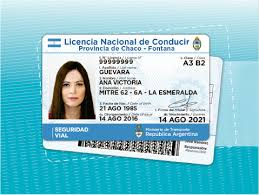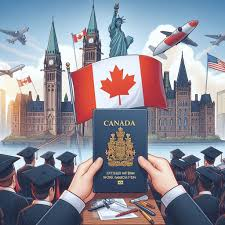The Argentina driving license, known locally as "Licencia de Conducir," is an essential document for residents and visitors wishing to drive legally within the country. This license not only permits individuals to operate vehicles but also serves as an important identification tool. The process of obtaining, renewing, and maintaining a driving license in Argentina involves several steps, ensuring that drivers are well-qualified and adhere to the nation's traffic regulations.
Types of Licenses
Argentina offers various types of driving licenses, each tailored to specific categories of vehicles and driver experience levels. These include:
- Clase A: For motorcycles.
- Clase B: For cars, light trucks, and similar vehicles.
- Clase C: For trucks and heavy vehicles.
- Clase D: For public transport vehicles such as buses.
- Clase E: For vehicles requiring special handling, like tractors and machinery.
- Clase F: For individuals with disabilities who need modified vehicles.
- Clase G: For agricultural vehicles.
Each class requires different qualifications and tests to ensure that drivers are competent and safe on the road.
Eligibility and Requirements
To obtain a driving license in Argentina, applicants must meet certain eligibility criteria and follow a specific process:
- Age Requirements: The minimum age for a Clase B license is 17 years. For other classes, the age requirement varies, typically ranging from 16 to 21 years.
- Medical Examination: A comprehensive medical examination is mandatory to ensure that the applicant is physically and mentally fit to drive. This includes vision tests, general health checks, and in some cases, psychological evaluations.
- Documentation: Applicants must provide proof of identity, residence, and in some cases, employment. This typically includes a national ID card (DNI), proof of address, and sometimes a work certificate.
- Educational Courses: Before taking the driving test, applicants must complete a traffic education course. This course covers road safety, traffic signs, and driving regulations.
- Written Test: The theoretical exam assesses the applicant’s knowledge of traffic laws, road signs, and safe driving practices.
- Practical Driving Test: The practical exam evaluates the applicant’s driving skills in real-world conditions. This includes basic maneuvers, adherence to traffic laws, and the ability to handle various driving situations.
The Licensing Process
- Application: The process begins with an application at the local licensing office (Dirección de Tránsito y Transporte or similar entity). Applicants must fill out forms and submit the necessary documentation.
- Medical Examination: Following the application, a medical examination is conducted by approved medical professionals.
- Educational Course: Applicants must enroll in and complete the mandatory traffic education course. This can often be done online or at certified driving schools.
- Written Test: After completing the educational course, applicants take the written test. This test is typically conducted at the licensing office.
- Practical Test: Upon passing the written test, the practical driving test is scheduled. This test is conducted on a designated driving course and/or on public roads.
- License Issuance: If the applicant passes both the written and practical tests, the driving license is issued. The license is typically valid for five years for new drivers, after which it needs to be renewed.
Renewal and Maintenance
Driving licenses in Argentina need to be renewed periodically. The renewal process is straightforward but requires timely attention to avoid penalties.
- Renewal Period: Typically, the license needs to be renewed every five years, though this can vary based on the driver’s age and the type of license.
- Medical Examination: As with the initial application, a medical examination is required for renewal to ensure ongoing fitness to drive.
- Documentation: Proof of identity and residence must be provided again during the renewal process.
- Fees: Renewal involves a fee, which varies depending on the type of license and the municipality.
- Penalties: Failing to renew the license on time can result in fines and potential suspension of driving privileges.
Special Considerations
- Foreign Drivers: Visitors from other countries can drive in Argentina with an international driving permit (IDP) alongside their valid home country license. However, long-term residents need to obtain an Argentine driving license.
- Driving Schools: Many applicants choose to attend driving schools to prepare for the tests. These schools offer comprehensive training programs that cover both theoretical and practical aspects of driving.
- Traffic Violations: Argentina has a point-based system for traffic violations. Accumulating too many points can result in the suspension or revocation of the driving license. It’s crucial for drivers to adhere to traffic laws to maintain a clean driving record.
- Technology and Modernization: In recent years, Argentina has made strides in modernizing its licensing process. Online applications, digital license renewals, and electronic payment systems have made the process more efficient and accessible.
Road Safety and Regulations
Argentina places a strong emphasis on road safety and driver responsibility. The country has implemented various measures to ensure that drivers are well-informed and capable of handling their vehicles safely.
- Traffic Signs and Signals: Understanding and obeying traffic signs and signals is a critical part of driving in Argentina. The traffic education course and written test ensure that drivers are familiar with these signs.
- Seat Belt Laws: Seat belts are mandatory for all vehicle occupants. Failure to wear a seat belt can result in fines and penalty points.
- Drinking and Driving: Argentina has strict laws against driving under the influence of alcohol or drugs. The legal blood alcohol limit is low, and violations can lead to severe penalties, including license suspension.
- Speed Limits: Speed limits vary depending on the type of road and area. Urban areas typically have lower speed limits compared to highways and rural roads.
- Child Safety: Specific regulations are in place for child safety in vehicles, including the use of appropriate car seats and restraints.
Obtaining and maintaining a driving license in Argentina involves a detailed process designed to ensure that drivers are knowledgeable, skilled, and responsible. From initial application and medical examinations to educational courses and rigorous testing, each step is crucial for fostering a safe driving environment. By understanding and adhering to these requirements, drivers contribute to the overall safety and efficiency of Argentina’s roadways.
Whether you are a resident or a visitor planning an extended stay, familiarizing yourself with the requirements and procedures for obtaining an Argentine driving license is essential for legal and safe driving in the country.
Contact Us
Phone: +1 (214) 843‑0863
Email: info@verifiedforgedfordocsgmail.com
Website: https://www.verifiedforgedfordocs.com/




















